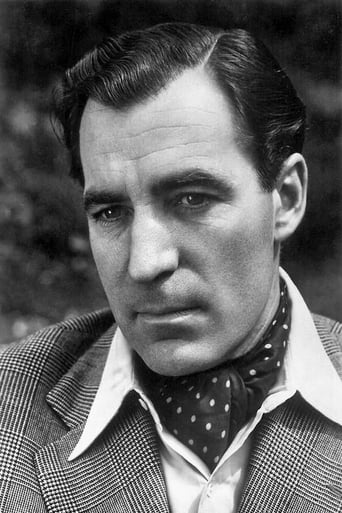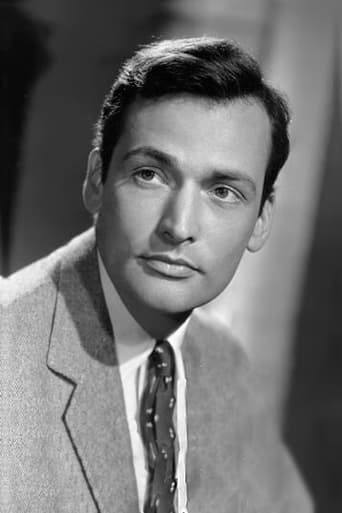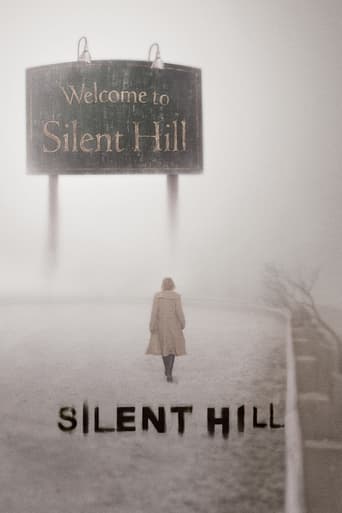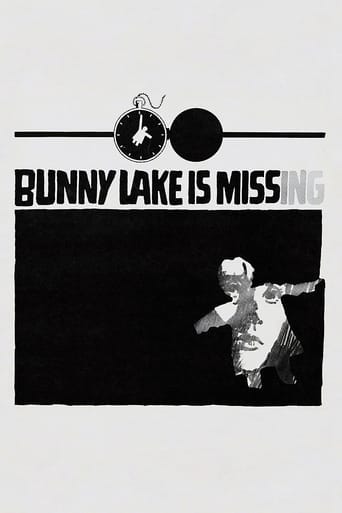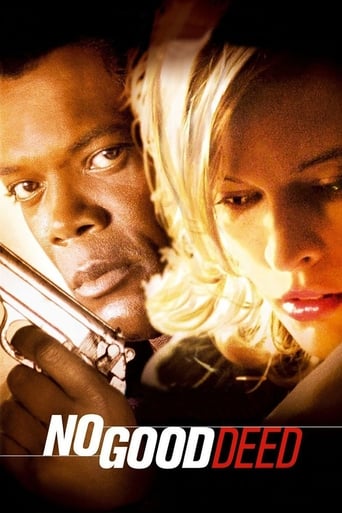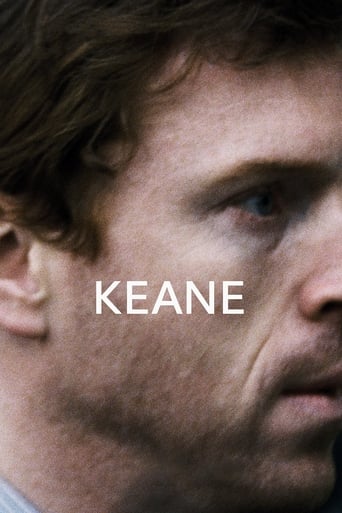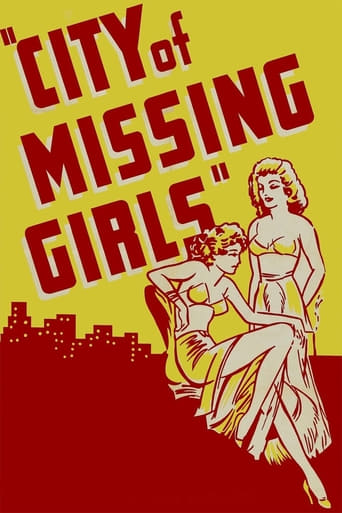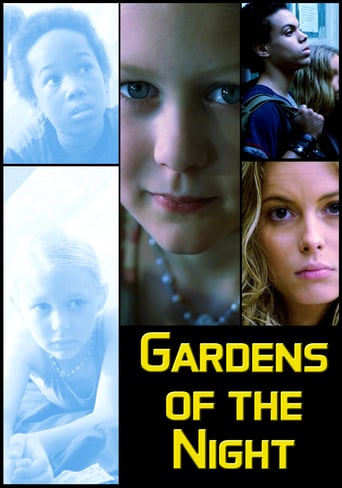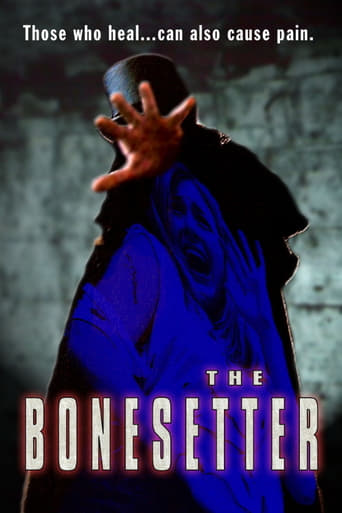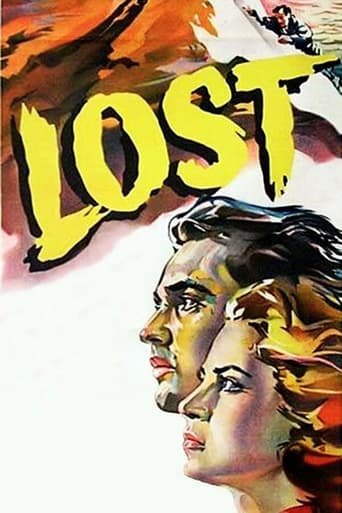
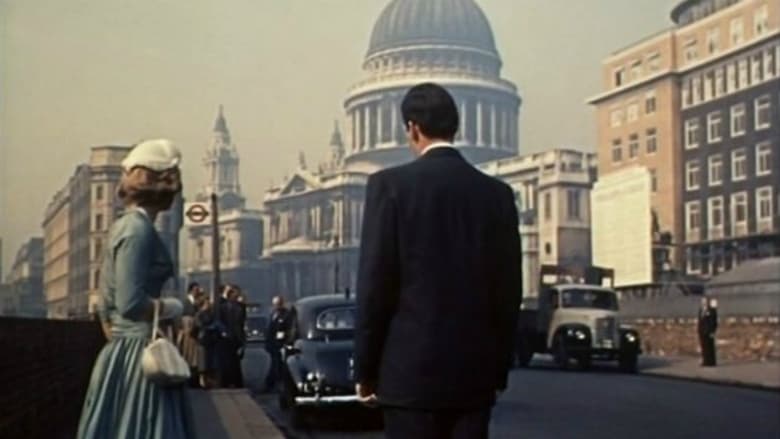
Lost (1956)
U.S. Embassy employee Lee Cochrane and his wife, Sue, receive a shock when they discover that their 18-month-old son, Simon, has disappeared in London. He was last seen with their nanny, and the couple seemingly have no leads that might help police Detective Craig in his investigation. The media sensationalizes the incident, causing an unnecessary distraction as the couple prepares to confront the culprit face-to-face.
Watch Trailer
Cast
Similar titles
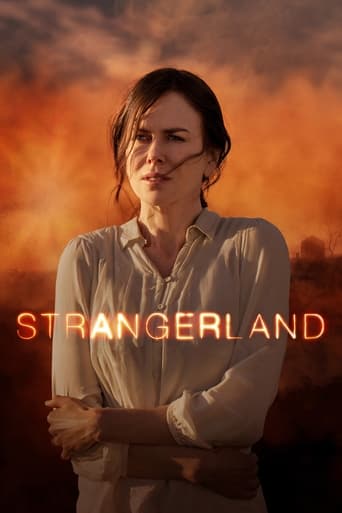
Reviews
The Worst Film Ever
People are voting emotionally.
A film with more than the usual spoiler issues. Talking about it in any detail feels akin to handing you a gift-wrapped present and saying, "I hope you like it -- It's a thriller about a diabolical secret experiment."
It is an exhilarating, distressing, funny and profound film, with one of the more memorable film scores in years,
LOST is an interesting, unusually-plotted crime film to come out of Britain in 1956. The electric opening sequence has a nanny taking the baby in her care to the park. She pops into a shop and comes back outside to discover that both baby and pram are missing. So begins a race-against-the-clock investigation as a dogged detective and the missing baby's parents do their very best to follow the clues and attempt to discover just what has happened to the baby. LOST is one of those films that provides a neat snapshot of everyday life during the era, with an endless array of characters introduced and subsequently questioned as the running time goes on. The suspense builds effectively to an action climax, then a twist, and another climax even more exciting. Overall, it's a nicely made little movie, one with plenty of spirit, and an exceptional number of familiar faces in supporting roles, from Thora Hird to CARRY ON stars Joan Sims and Barbara Windsor and plenty more besides.
In Britain, as in America, there seemed to be an unwritten convention in the fifties that certain film genres were more suited to colour and others to black-and-white, and crime dramas fell firmly into the latter category. This was true both of films directly influenced by the American film noir tradition, such as "The Man Between", "The Long Memory" and "Tread Softly Stranger", and of other British crime dramas of the era such as "The Blue Lamp","Town on Trial" and "Stage Fright", Hitchcock's only British film of the decade. "Lost", however, is one of the exceptions, being made in vivid Technicolor, possibly because it is not primarily a film noir or a suspense thriller but a police procedural. Simon, the infant son of Lee Cochrane, an American diplomat, and his Austrian-born fashion designer wife Sue, is kidnapped when his nanny leaves him in his pram outside a London shop. (Younger people may find this hard to believe, but in the fifties and sixties it was common practice for mothers and others having charge of young children to leave them outside in their prams while they were shopping). Detective Inspector Craig of Scotland Yard is charged with investigating the crime. With his aquiline features, David Farrar would have made an excellent Sherlock Holmes, and he plays the patient, methodical, unemotional Craig very much as a detective of the Holmes school. He is a far cry from the rough, tough, Dirty Harry types we have become used to ever since the sixties. His method of solving the crime is to examine all the discarded items- a button from an expensive coat, a paper bag from a baker's shop in Slough, a torn page from a library book- which he finds in the vicinity of Simon's pram in Hyde Park and to trace them back to their source with the help of the Yard's forensic department. His colleagues- and Simon's distraught parents- are sceptical about this methodology, but Craig is vindicated when one of these objects does indeed prove to be the vital clue. The other cast member who stand out is the lovely Julia Arnall as Sue. Julia (who like her character was Austrian by birth) was one of the most beautiful actresses the British film industry during this period, with the looks of another Grace Kelly, but never seemed to become a major star. In Britain, as in Hollywood, looks alone have never been a cast- iron guarantee of stardom. I said earlier that this is not primarily a suspense thriller, but the final scene, a literal cliffhanger set on Beachy Head near Eastbourne, is clearly influenced by Hitchcock. (Similarly, "Town on Trial" also has a very Hitchcockian finale, in that case set on a church steeple). It is not, however, a film which one would watch today for thrills. If one watches it at all- and I can appreciate that to some modern film fans it would seem very slow and dated- it is for its historic interest as an example of an old-fashioned type of crime drama and as a nostalgic view of the now-vanished Britain of the fifties. 6/10 A goof. Craig states that an abduction can only legally be called a "kidnapping" when it is followed by a demand for money with menaces. This is not true today and was not true in 1956. In English common law, kidnapping is the unlawful taking away or transportation of a person against that person's will, whether or not a demand for money with menaces is made. The making of such a demand constitutes the separate offence of blackmail.
After a long and successful career as a cinematographer this was Guy Green's second effort as a director and he approached "Lost" in a straightforward narrative manner,adopting an almost documentary style not unlike a Rank "Look at Life"episode featuring the workings of the Met Police.To some extent the involvement of the missing baby's parents is almost a side issue to the police procedural - type exposition of the plot.Mr D.Farrar is excellent as the senior detective to whom the kidnap is but one of a number of parallel enquiries.Dedicated,pains-taking,a stickler for protocol,smartly dressed and articulate,he is the type of copper that has disappeared from the radar in the last thirty years or so since "The Sweeney" made it fashionable for detectives to grunt,sniff and swear at everyone in between taking great gulps from the office Scotch. His sidekicks Mr A.Oliver and in particular the lovely Miss E.Summerfield also shine and are spick and span and clearly clean in thought,word and deed. Miss Julia Arnall is very beautiful,exquisitely dressed and a better actress than she has been given credit for.She is eminently believable as the distraught middle - class mother repressed by her own upbringing. Mr D.Knight as her husband is slightly less satisfactory.Presumably included as the token American presence he plays as very much second fiddle to the formidable Miss Arnall. My personal favourite Miss Shirley Anne Field makes her first credited movie appearance as what in the 1950s was known - disgracefully - as a "lumpy jumpered petrol pumper", posh daughter of yokel taxi driver Mr G.Woodbridge. For those who remember bomb sites,Booklovers' Libraries and paper bags with shop names on them,"Lost" is a positive feast of nostalgia. Judged on it's own merits it is a highly competent piece of work with a splendid cast right down to the wines and spirits.I can thoroughly recommend it to lovers of well - paced Britsh crime dramas just a little out of the main stream.And those clothes,those cars...the height of 1950s chic.
Lost is a decent little British film that pretty much covers all bases regarding the search for a kidnapped baby. David Knight and Julia Arnall are the American couple whose baby is snatched from under the nose of their nanny when she parks his pram outside a chemists shop in London. A frantic search ensues, led by the reassuringly gruff Detective Inspector played by David Farrar, who has to wade through a mass of red herrings before his dogged investigation finally leads him to the culprit.Lost is a rare example of a mid-fifties British drama filmed in colour, and its most fascinating aspect is the location shots of familiar London streets populated by people either now long-gone or in the sunset of their lives. The story is quite absorbing, although a little uneven, and everything is much more polite than it would be today. Having said that, the story's subject matter is probably more relevant today than it was when the film was made, and it wouldn't take much tweaking to be brought up to date and slotted into an ITV Sunday night drama schedule.A few familiar faces make unexpected appearances: one of the girls in the chemist shop is an 18-year-old Barbara Windsor, and the flirtatious seller of ice creams in Kensington Park is her Carry On co-star, Joan Sims. Mona Washbourne, Dandy Nichols, Thora Hird, Joan Hickson, Percy Herbert and Shirley-Anne Field are also in there somewhere, largely in blink and you'll miss them roles.
